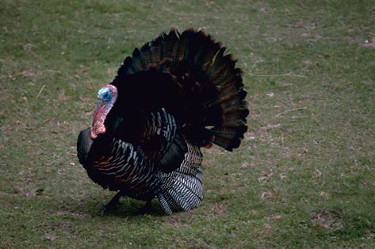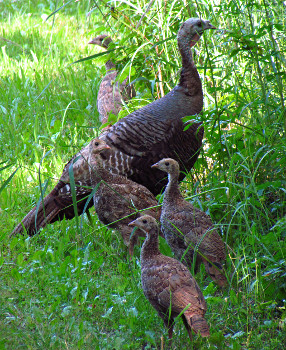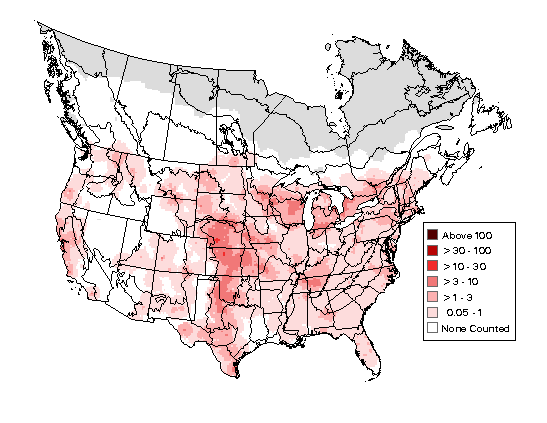Wild Turkey

Wild Turkey Information
Length: 36 - 49"
Habitat: Mature deciduous and mixed woodlands. In summer, frequents forest edges, forest clearings, and woodlands near agricultural areas. In winter, withdraws deep into the forest, preferring areas with mast-producing trees and some coniferous trees for roosting.
Diet: Herbaceous vegetation, including buds, leaves, stems, roots, and tubers; seeds, grains, mast such as acorns and beechnuts, wild fruits and berries, insects and spiders. Sometimes, snails and small amphibians.
Additional Information
Wild TurkeyPhoto, description, range and distribution, habits and habitat, and management info. (From New Hampshire Fish and Game Dept.)
Female Wild Turkey with Juveniles

G. Robertson [CC BY-SA 3.0], via WC
Wild Turkey
Identification Tips
- Very large, small-headed, round-winged, long-tailed, ground-dwelling bird
- Unfeathered bluish head and reddish throat
- Dark breast, belly and upper back
- Iridescent bronze and green wings
- Barred primaries
- Dark, fan-shaped tail with brown or buff band at tip
- Larger head with wattle at throat, caruncled forehead, and projection behind the bill
- More iridescent plumage
(Credit: U. S. Geological Survey)
Breeding Bird Survey Map,
2011-2015

(Image credit: USGS)
Range in New England
The Wild Turkey is found year-round in New England, excluding northern Maine.
Year-round Map from eBird
Year-round sightings of the Wild Turkey over last 10 years
Christmas Bird Count Map
Historical CBC Map from USGS